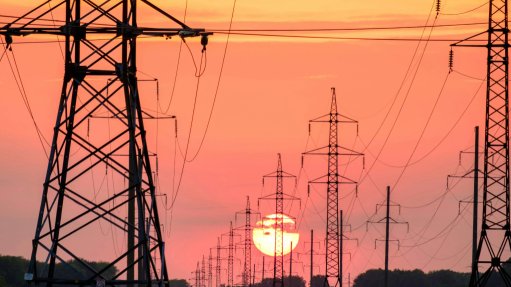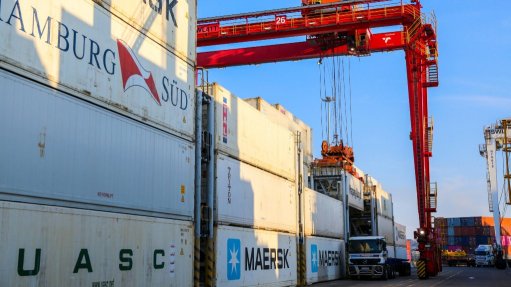Hybrid solutions gain traction amid energy challenges
As loadshedding continues to impact businesses, many corporates are opting for hybrid solutions that leverage grid, generator, and renewable energy, mainly solar, to alleviate the pressure of unreliable power supply.
In addition to providing a more consistent energy supply, hybrid solutions can also result in a 50% to 70% reduction in the cost of electricity, and up to 90% saving on the cost of running a generator, international bank and wealth manager Investec sustainable solutions head Melanie Humphries says.
However, Humphries emphasises the importance of working with experts to create an appropriate solution that integrates complementary technology that is suited for the business’ energy requirements.
While integrating additional battery storage and panels are relatively easy to do, the correct inverters must be installed with the future state of the system in mind as these can be far more costly to replace and upgrade, she elaborates.
Humphries also emphasises the importance of selecting the correct structure of the solution. This can range from businesses renting or buying and financing the solution, or just buying the power from an operator. She points out that embedded generation in the corporate and industrial sectors should be prioritised.
Humphries notes that there is a misconception that the energy market is significantly saturated, when in reality, more supply is needed. She elaborates that market saturation is largely evident in suppliers of residential solar installations.
However, sustainable solutions comprise of many components. These include selecting the right hardware, ensuring component quality, suitable warranties, and solution performance reports. Additional considerations include the maintenance and scalability of components, as well as the interaction with complementary backup solutions.
Further, while the integration of batteries provides the ability to store excess energy for later use, battery technology is currently fairly expensive and can result in system constraints. However, there have been some advancements in this space making it a viable consideration for businesses, Humphries elaborates.
Far-Reaching Impacts
The recent employment statistics reveal job losses in the manufacturing, mining, and agricultural sectors, largely owing to the ongoing energy and logistics crisis, says Investec power and infrastructure technical adviser Dieter Matzner.
In particular, heavy energy users are struggling to maintain output and grow as high energy costs significantly impact profitability.
He says that this issue is unlikely to be resolved soon, as it involves restructuring the energy markets to promote free market operations.
Further, South Africa needs to deploy a significant amount of generation capacity, expected to be 53 GW by 2032, specifically in the renewable-energy field, for the generation shortfall to be resolved. To achieve this, projects need grid connections, which are currently unavailable and require extensive timelines, along with capable staff and financing.
Wheeled Power Considerations
Matzner explains that wheeled power offers a more affordable solution. The offtaker, who buys the power or renewable attributes of the system, bears the wheeling risk. This risk pertains to systemic failure resulting from non-payment. The energy generator holds no liability once the power is delivered into the network, with issues such as loadshedding and transmission or distribution system failures being the offtaker’s responsibility.
Matzner adds that, as the electricity market transitions to a free market, there will likely be a revision of Eskom’s and the municipalities’ tariff systems because electricity sales are a significant source of revenue. These entities will experience a loss of revenue owing to self-generation by consumers. The proposed Eskom virtual wheeling system will enable independent power producers to sell electricity to smaller offtakers in municipal distribution systems.
However, Eskom's virtual wheeling is currently in the testing phase. Therefore, its implementation, process, tariff structure, and timelines remain uncertain.
Expanding Grid Capacity
As generation is being addressed, Matzner notes that challenges related to transmission of power and the capacity of the existing grid infrastructure need to be tackled.
Eskom is implementing a curtailment strategy. This involves curtailing power producers to make unused capacity available to additional power producers to connect to the grid. This strategy is particularly significant in saturated grid access areas such as the Northern, Eastern, and Western Cape provinces.
“Essentially, if there are ten power producers with an existing 100 MW capacity and these are curtailed to 90 MW, effectively 100 MW capacity is freed up for an additional power producer to connect to the grid and supply,” Matzner explains.
This strategy diversifies power generation and allows producers to supply the maximum amount of power into the grid at all times of day. This also reduces fluctuations and underuse of grid capacity.
However, Matzner notes that curtailment has created market uncertainty. In particular, it has delayed the request for proposals or bidding processes in Bid Window Seven of the Renewable Energy Independent Power Producer Procurement Programme, the Battery Energy Storage System and gas-fired power station procurement.
Matzner maintains that there might be financing opportunities for strengthening and expanding the grid to add capacity in resource-rich areas in future.
Article Enquiry
Email Article
Save Article
Feedback
To advertise email advertising@creamermedia.co.za or click here
Comments
Press Office
Announcements
What's On
Subscribe to improve your user experience...
Option 1 (equivalent of R125 a month):
Receive a weekly copy of Creamer Media's Engineering News & Mining Weekly magazine
(print copy for those in South Africa and e-magazine for those outside of South Africa)
Receive daily email newsletters
Access to full search results
Access archive of magazine back copies
Access to Projects in Progress
Access to ONE Research Report of your choice in PDF format
Option 2 (equivalent of R375 a month):
All benefits from Option 1
PLUS
Access to Creamer Media's Research Channel Africa for ALL Research Reports, in PDF format, on various industrial and mining sectors
including Electricity; Water; Energy Transition; Hydrogen; Roads, Rail and Ports; Coal; Gold; Platinum; Battery Metals; etc.
Already a subscriber?
Forgotten your password?
Receive weekly copy of Creamer Media's Engineering News & Mining Weekly magazine (print copy for those in South Africa and e-magazine for those outside of South Africa)
➕
Recieve daily email newsletters
➕
Access to full search results
➕
Access archive of magazine back copies
➕
Access to Projects in Progress
➕
Access to ONE Research Report of your choice in PDF format
RESEARCH CHANNEL AFRICA
R4500 (equivalent of R375 a month)
SUBSCRIBEAll benefits from Option 1
➕
Access to Creamer Media's Research Channel Africa for ALL Research Reports on various industrial and mining sectors, in PDF format, including on:
Electricity
➕
Water
➕
Energy Transition
➕
Hydrogen
➕
Roads, Rail and Ports
➕
Coal
➕
Gold
➕
Platinum
➕
Battery Metals
➕
etc.
Receive all benefits from Option 1 or Option 2 delivered to numerous people at your company
➕
Multiple User names and Passwords for simultaneous log-ins
➕
Intranet integration access to all in your organisation


















